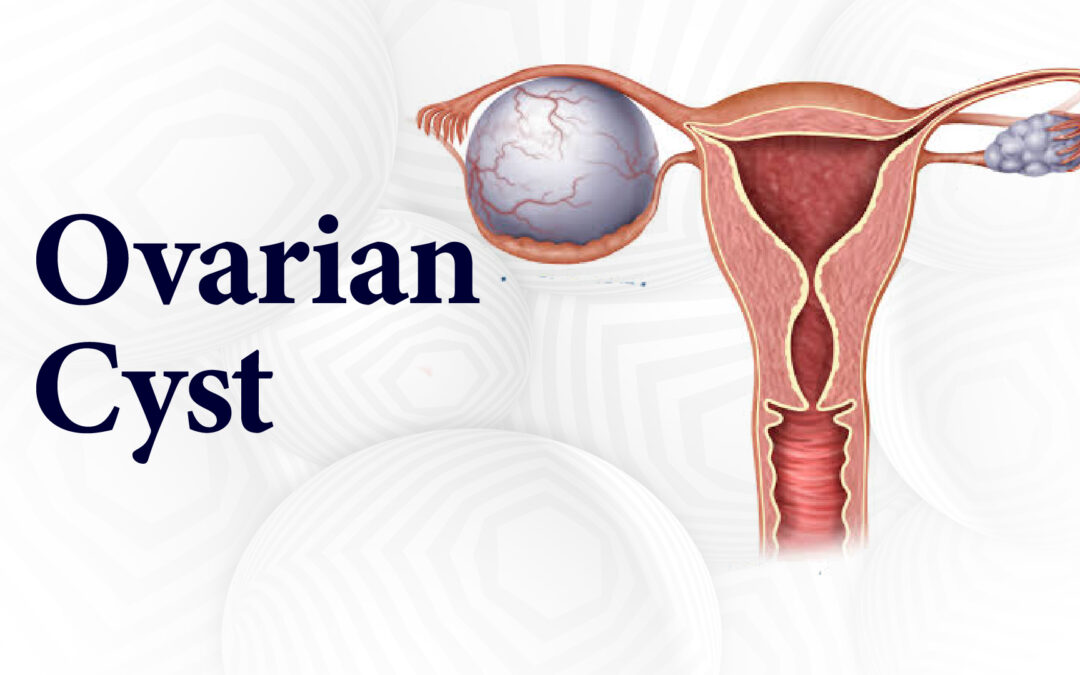“Cyst” is a closed sac-like structure containing fluid, especially inside of the body. This is different from an abscess which contains pus, because a cyst does not contain pus. It is a pocket of fluid similar to a blister. It usually contains either liquid, gaseous, or semi-solid material. The outer or capsular portion of a cyst is called the cyst wall. Cysts can develop at different parts of the body such as the Urinary bladder, the testes, the ovary, etc. A cyst may not necessarily be a sign of cancer. Howbeit, some cysts can become cancerous over time, especially after menopause.
Ovarian cysts occur when fluid accumulates within a membrane inside the ovary. Ovarian cysts are often smaller than 10 centimeters and harmless, and they do not produce symptoms, but disappear on their own. Sometimes they can burst or twist and cause complications such as rupture, hemorrhage, and torsion. These kinds of complications are considered as emergencies in gynecology. Hence, it is essential to promptly diagnose and treat them to avoid high morbidity and mortality.
Categories Of Ovarian Cyst.
Two main categories of Ovarian Cyst have been identified and they include:
- Functional Ovarian Cyst: Functional ovarian cysts are the most common type of ovarian Cyst. They occur with the Menstrual Cycle and are benign, not cancerous.
- Pathological Cyst: Pathological cysts grow in the ovaries and are not related to the menstrual cycle. They may be harmless or cancerous (malignant).
Ovarian cysts can also be categorized as Simple or Complex with a simple Cyst containing fluid, and a Complex Cyst contains Blood or a Hard Substance.
Types Of Ovarian Cysts
Follicle Cysts: These develop when a follicle does not open to release an egg during menstruation. They are the most common type of cyst, often produce no symptoms, and usually disappear in 1–3 months.
Corpus Luteum Cysts: These kinds of cyst form if the sac that released the egg does not shrink in the usual way but fills with fluid. They usually disappear within weeks but can grow to almost 4 inches across. They can also twist the ovary, causing pain and bleeding.
Endometriomas: This results from endometriosis, when endometrial-like tissue develops outside the womb. It can cause pain during menstruation and sex.
Dermoid Cysts: Dermoid Cysts usually develop from cells that are present from birth. They can occur anywhere, including the ovaries.
Cystadenomas: These are cysts that fill with a watery fluid.
Polycystic Ovary Syndrome: This involves the development of many small cells. It can result in pain and fertility problems and has links with other health conditions.
Causes Of Ovarian Cysts
There are different conditions that causes Ovarian Cyst, depending on the type of cyst. Causes of Ovarian Cyst include:
- INFECTIONS: Infections that affect the ovaries and fallopian tubes can result in the formation of cysts.
- HORMONAL FACTORS AND DRUGS: Some hormones and drugs that help people ovulate can lead to follicle and corpus luteum cysts, also known as functional cysts.
Ovarian Cysts usually occur without symptoms but may be suspected when the following happens:
- Unusual Vaginal Bleeding
- Pelvic Pain
- A dull ache in the lower back and thighs
- Pain just before menstruation begins or ends.
- Pain in the pelvic area or abdomen during sex
- Problems emptying the bladder fully or frequent urination
- Unexpected weight gain
- Breast tenderness
- Feeling full after eating less than usual
- Menstrual irregularities
- Tachycardia, hypotension and fever. These symptoms may indicate severity and medical attention should be sought quickly.
Investigations for Ovarian Cyst
- Abdominopelvic Ultrasound scan. Cysts are usually incidental findings, a Scan is important in locating and determining the size or complication of Cysts.
- Full Blood Count.
- Pregnancy Test.
- Urinalysis.
- Histology is the method of definitive diagnoses, it helps to determine the kind of cyst, whether benign or cancerous.
Treatment of ovarian Cysts
Treatment of ovarian Cysts will depend on whether or not the person has undergone menopause, size and appearance of the cyst, presence or absence of symptoms and the person’s age.
- Watchful waiting: If a cyst is less than 10 centimeters across and is not giving symptoms, a doctor may recommend watchful waiting but ultrasound is used to monitor the cyst over time.
- Analgesics: Pain killers are recommended for the management of the pain associated with some complicated Cysts. NSAIDS e.g Diclofenac, Ibuprofen may be used.
- Surgery may be recommended if the cyst causes severe persistent pain, is large or appears to be growing, looks unusual on a scan, twisted, or ruptured or if it lasts for several menstrual cycles.
Prevention of ovarian Cysts
There is no specific way to prevent ovarian cyst growth in most cases, but regular pelvic examinations will allow for monitoring and early treatment to prevent complications. The current use of oral contraceptive pills (OCPs) may protect against the development of functional ovarian cysts, but should not used in its treatment.
Ovarian cysts are common, oftentimes cause no symptoms and resolve on their own without treatment. However, some cysts can become large, rupture, or cause twisting in the ovaries, resulting in pain and possibly bleeding, and some even become cancerous over time. Therefore, anyone who experiences severe abdominal pain and bleeding should seek urgent medical help as this can indicate an ovarian cyst that needs treatment.
References
- https://www.mayoclinic.org/diseases-conditions/ovarian-cysts/symptoms-causes/syc-20353405
- https://my.clevelandclinic.org/health/diseases/9133-ovarian-cysts
- Ovarian Cysts Causes, Symptoms, Diagnosis, and Treatment”. eMedicineHealth.com. Archived from the original on 2007-03-07.
- “Ovarian cysts”. Office on Women’s Health. April 2019. Archived from the original on 12 August 2021

